- News
- Reviews
- Bikes
- Accessories
- Accessories - misc
- Computer mounts
- Bags
- Bar ends
- Bike bags & cases
- Bottle cages
- Bottles
- Cameras
- Car racks
- Child seats
- Computers
- Glasses
- GPS units
- Helmets
- Lights - front
- Lights - rear
- Lights - sets
- Locks
- Mirrors
- Mudguards
- Racks
- Pumps & CO2 inflators
- Puncture kits
- Reflectives
- Smart watches
- Stands and racks
- Trailers
- Clothing
- Components
- Bar tape & grips
- Bottom brackets
- Brake & gear cables
- Brake & STI levers
- Brake pads & spares
- Brakes
- Cassettes & freewheels
- Chains
- Chainsets & chainrings
- Derailleurs - front
- Derailleurs - rear
- Forks
- Gear levers & shifters
- Groupsets
- Handlebars & extensions
- Headsets
- Hubs
- Inner tubes
- Pedals
- Quick releases & skewers
- Saddles
- Seatposts
- Stems
- Wheels
- Tyres
- Health, fitness and nutrition
- Tools and workshop
- Miscellaneous
- Buyers Guides
- Features
- Forum
- Recommends
- Podcast
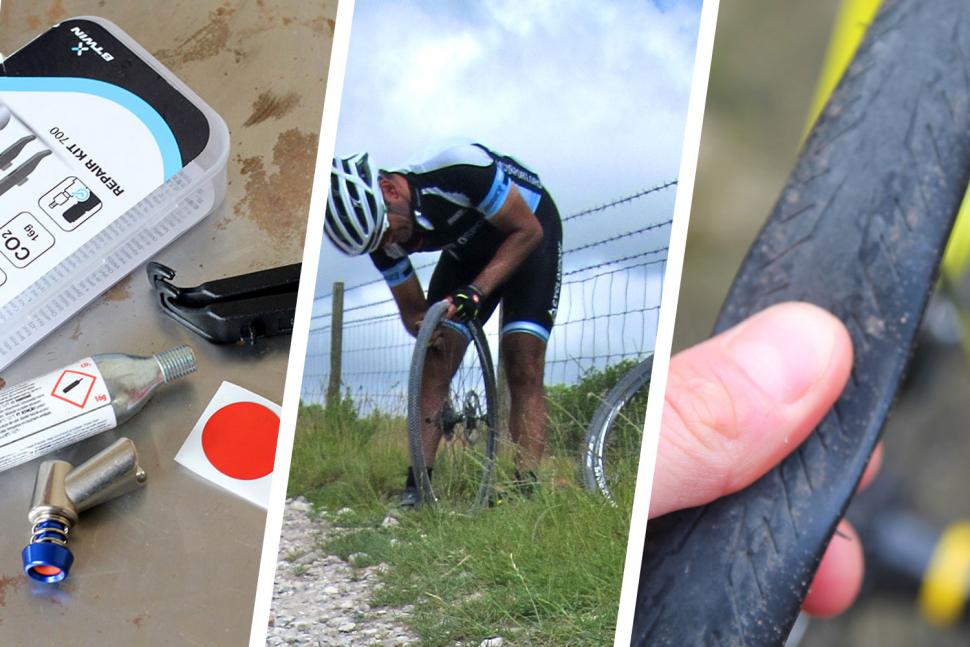 puncture
puncturePuncture prevention 101: learn how to swerve flats with these 11 top tricks
There's nothing much worse than a puncture to ruin a bike ride, whether it's commuting to work in the rain or a leisurely Sunday ride in the hills. Is it possible to completely avoid punctures? In truth, not really, but there are some things you can do to try and minimise the opportunity for a flat tyre to ruin a bike ride. Here are some tips from the road.cc staff.
Puncture resistant tyres
Not all bicycle tyres are created equal. Some are designed to be light and fast, some are designed to resist punctures and be durable. Whether you’re riding a carbon race bike or a commuting bike, fitting a pair of tyres with some sort of puncture protection can be a really good step towards minimising your chances of getting a flat.
- road.cc People's Choice: Your favourite cycling tyres revealed
Puncture resistant tyres are manufactured with materials designed to prevent the penetration of sharp objects, like glass or flint, from slicing through the tyre rubber and reaching the inner tyre. A layer of Kevlar or similar tough material is added to light road bike tyres, and when weight is less of a concern (such as for commuting and touring) an extra layer of rubber is added under the tread.
Puncture resistant tyres will carry a bit of a weight penalty, but if you want to avoid flats, it’s a small price to pay.
Tubeless tyres
The reason you get a puncture is the inner tube being pierced by a sharp object cutting through the tyre, like a nail, thorn or piece of glass. Remove the inner tube and there’s nothing to puncture. Better still, replace the inner tube with dedicated sealant, which can plug smaller holes, and you can virtually eliminate flat tyres. Cars and most motorbikes use tubeless tyres (without sealant) and it's becoming more popular in the road bike world.
- Road tubeless: everything you need to know
Going tubeless can involve a bit more of an upfront investment. You need tubeless compatible rims and tyres, but increasingly new road bikes are coming with tubeless-ready rims, so you might just be a tyre upgrade away from going tubeless. With special valves and a bottle of sealant and a bit of know-how (read this guide) you can ditch the inner tubes for good.
We’re big fans of tubeless here at road.cc - numerous members of the team have done entire winters without any flats riding tubeless.
- Guide: How to fit tubeless tyres
Change your inner tubes
Inner tubes can vary a lot, from super light latex inner tubes to chunky butyl inner tubes. Butyl tubes are more common, but they’re not all made the same. Regular ones commonly use 1mm thick rubber, but super light versions can reduce the rubber thickness down to 0.6mm, but along with the reduced weight comes an increased risk of puncturing.
- Buyer's guide to inner tubes — how to save weight, ride faster or prevent flats with new tubes
Some people claim that latex inner tubes can actually prevent punctures because the material can deform around a sharp object.
“The latex stretches and deforms around the body which is trying to penetrate the tube instead of it trying to resist the body and shortly after being punctured through,” says tyre manufacturer Challenge. “The highly elastic latex material is much more difficult to puncture.”
Latex tubes lose air pressure and need regular topping up, though, and while they are much lighter than butyl tubes, they're more expensive, and there’s no guarantee they’ll prevent a flat. For everyday riding, you probably don’t want fewer punctures to come at the expense of daily inflation.
Another option is to use inner tubes filled with sealant. The liquid contains small rubber particles that dries on exposure to air. It works a bit like a tubeless setup, but the inner tube is filled with the sealant, so easier to fit and less mess involved. There is a weight penalty though. There are some aftermarket products like Slime (tested here) but if you have inner tubes with removable inner cores, you can add sealant to regular tyres.
This solution does add weight to the entire wheel but if eliminating punctures is your key priority, it might be the right solution for you. It would be a good step for daily commuting and touring bikes, where weight isn’t such a high concern. Partner with puncture resistant tyres and you have a pretty good puncture prevention setup.
Solid tyres
What if you remove the air cavity in a conventional pneumatic tyre setup completely? Some companies have dabbled with solid tyres in the past, with varying levels of success, and so far they’ve not really offered a serious rival to the performance and cost of regular tyres and inner tubes.
Tannus is one company that is investing in the technology, and we have been impressed with its most recent tyre which offers a surprisingly good ride performance. Fitting is more complicated than regular tyres and makes tubeless look a doddle. But there’s no way of puncturing a solid tyre, so for a commuting bike, a solid tyre offers some advantages.
Pump up your tyres
It’s worth checking the pressure in your tyres. Are you running your tyres too soft? A very soft tyre is more likely to puncture when riding over a rough road and it’s possible to pinch the inner tube between the tyre and rim if you hit a pothole with sufficient force. In mountain biking, this is called a “snake bite” because inspection of the inner tube will reveal two neat holes either side of the inner tube.
The maximum* tyre pressure will be printed on the side wall of the tyre - if you pump them up to that you'll at least know they are not too soft. Having a pump with a pressure gauge is any easy way to ensure the tyres are suitably inflated. Pressure gauges are pretty cheap and a good investment if you do a lot of riding, and removes the guesswork.
(*Not to be confused with the optimum or recommended tyre pressure - sometimes the max tyre pressure and the recommended pressure - the pressure at which the tyre performs best - are the same thing, but often they're not. In terms of a road tyre you won't go far wrong if you pump them up to 100psi and you can easily go 10psi less with a tubeless tyre… That's the potted version, in truth the subject of optimum tyre pressures is a whole other feature.)
If you don’t have a pressure gauge, press the tyre firmly with two thumbs.You can tell pretty easily if it feels too soft by how much you’re able to deform the tyre.
Check for worn tyres
When’s the last time you checked your tyres? A worn tyre is more likely to puncture because there’s less rubber tread on the tyre. Some tyres have wear indicators (small holes) so check these regularly, especially if you do a lot of miles every week, to ensure you’re not riding with worn out tyres.
It’s also worth checking regularly for flint and glass embedded in the tyre. There are two schools of thought on whether you should leave or remove any objects in the tyre. Some say once an object its embedded in the tyre, it’s unlikely to puncture the tube, but some people say you’re just playing the waiting game until it bites the inner tube.
We prefer to remove any we find. Use a pair of tweezers to remove any objects embedded in the tyre and discard in the bin. If any big holes are left vacant, get some superglue and carefully fill the hole.
Pick your line
Avoid riding over gravel or other debris on the road and definitely avoid riding over broken glass. Also, avoid riding through puddles where possible in case they hide potholes. Don’t ride in the gutter of the road as this is where much of the debris lurks that could puncture a tyre as passing cars tend to push all the gravel, grit, flint and thorns out to the edge of the road.
Don’t ride in the rain
You might notice you get more flats in the rain. This is because rain acts as a lubricant and helps flint and glass to slice through the rubber of a tyre. You also tend to find that debris from the gutter of the road and the hedgerows gets washed out into the bit of the road you tend to cycle along.
It's that combination of rain and debris in the road that is the reason you tend to get more punctures in the winter.
- Buyers guide: The best tyres to keep you cycling through winter
Don’t leave the house
We’re joking. Well, half-joking. I know somebody who managed to get a puncture on the turbo trainer (no idea how) so even in the safety of your own living room, you’re never far from a puncture.
Never mention the P word
Never ever mention the word puncture if you’re about to set off on a ride, or during a ride. Don’t joke about how you’ve not had a puncture in months because next thing you know you’ll be stood by the side of the road fixing a flat. Best just to avoid all talk of punctures and instead talk about the weather or something.
Be prepared for a puncture
While you can take some prevention against a flat tyre, it pays to be prepared and always take one or two spare inner tubes and a decent pump with you on a ride. You might want to consider a couple of inner tube patches as well, especially for longer rides in bad weather. A small saddle bag can easily be stuffed with enough spares to get you out of a spot of bother and not add much weight to the bike.
Got any good tips you use to avoid punctures?
David worked on the road.cc tech team from 2012-2020. Previously he was editor of Bikemagic.com and before that staff writer at RCUK. He's a seasoned cyclist of all disciplines, from road to mountain biking, touring to cyclo-cross, he only wishes he had time to ride them all. He's mildly competitive, though he'll never admit it, and is a frequent road racer but is too lazy to do really well. He currently resides in the Cotswolds, and you can now find him over on his own YouTube channel David Arthur - Just Ride Bikes.
Latest Comments
- Hirsute 59 min 49 sec ago
Radar tells me their closing speed, if they are slowing and how far away. Then I decide to say a prayer. The change of light pattern is incidental.
- lonpfrb 1 hour 19 min ago
Quite so, which is why our village 20mph zone covers the whole residential extent. Of course, enforcement is another thing..
- lonpfrb 1 hour 45 min ago
No, that's very doubtful while proper testing would be fully destructive.
- TheBillder 2 hours 32 min ago
In that £1000 exactly scenario, beginners should probably be made aware that pedals will be extra.
- don simon fbpe 3 hours 1 sec ago
What's wrong with dropping down on to the Millenium Bridge, or the swing bridge, then the brief, but satisfying climb back up the hill? #training....
- chrisonabike 3 hours 40 min ago
The relatives might of course disagree, but in general I'd countenance a relatively light sentence* if only we could fix it so that those who...
- ktache 4 hours 20 min ago
Id forgotten that I got a second hand set of project two's for my getting to work bike over twenty years back.
- Veganpotter 5 hours 17 min ago
My bet is that all these tires popping off are from people with bad pressure gauges or they're simply just putting too much air in on purpose. ...
- chrisonabike 6 hours 32 min ago
David9694 - you were right! These new autonomous vehicles really are conspiring to run out of control!...

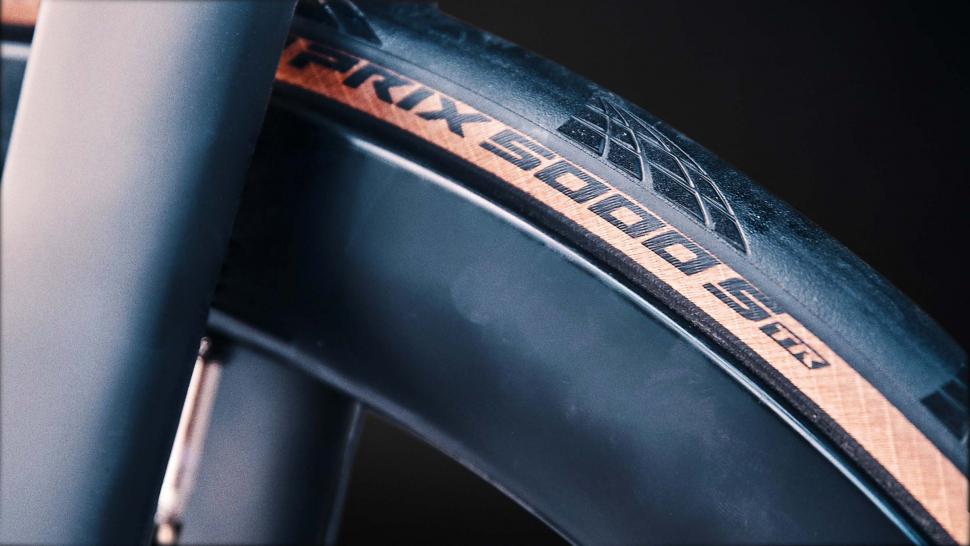
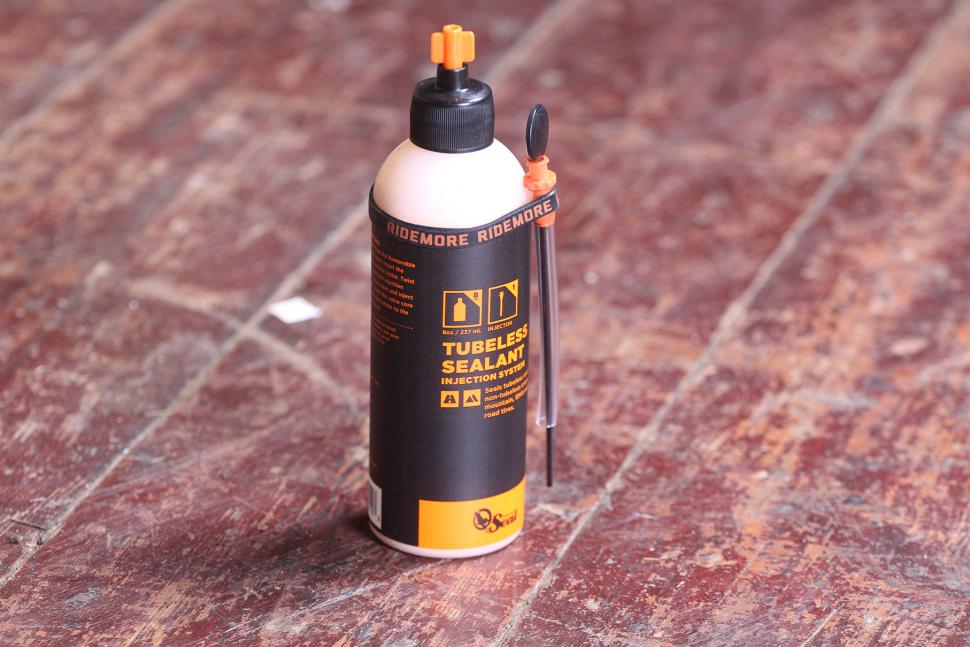
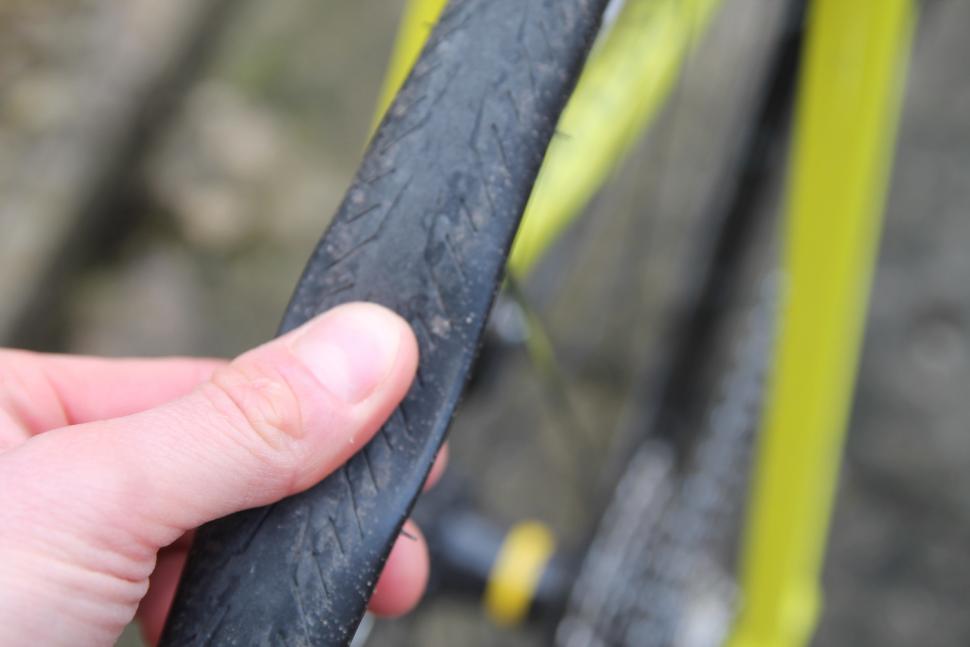
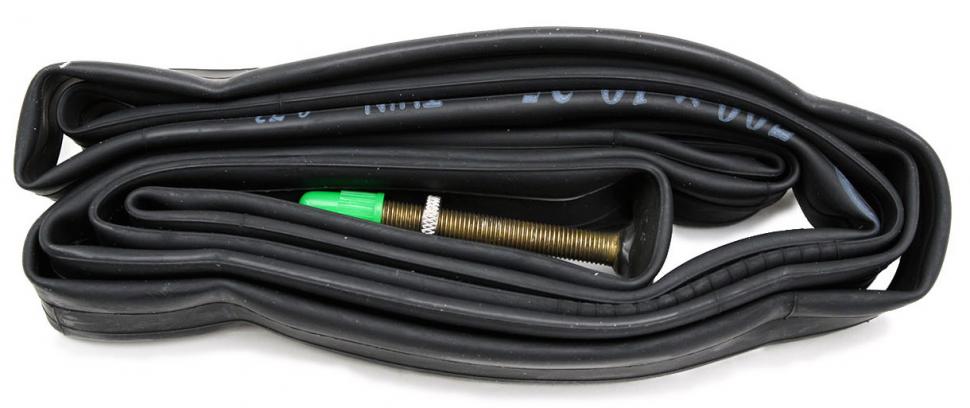
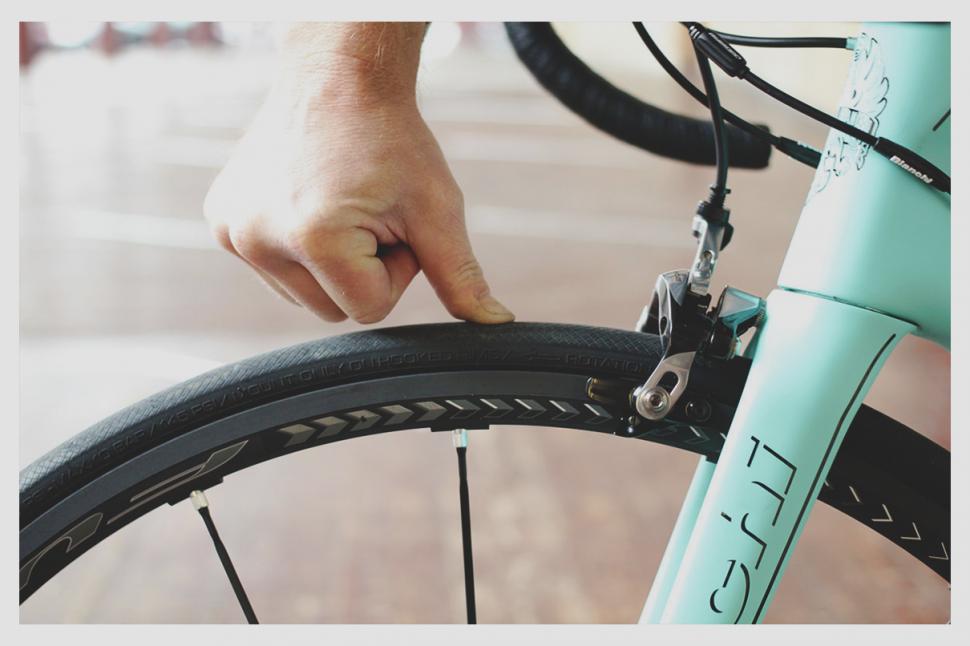


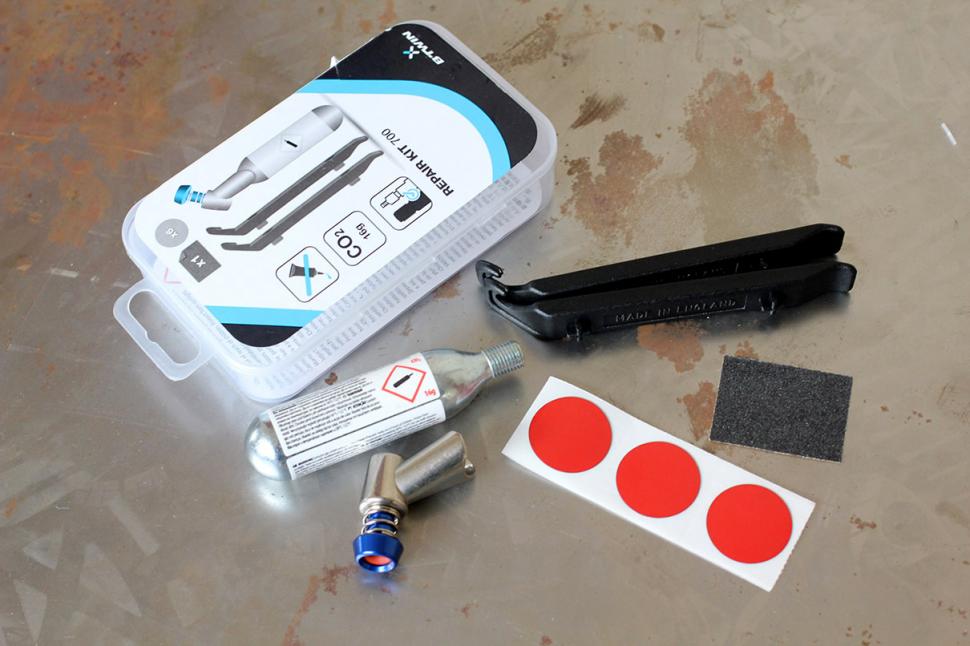
Add new comment
79 comments
I get the same ammount of punctures, point is that a puncture that would burst a tube like a bit of glass, thorn or piece of wire has no effect on your ride when you run tubeless, it just deals with it and all you see is a little wet patch on the tyre carcass.
Tubeless is probably the best way to avoid punctures. But like anything, if you don't set them up properly you will experience issues. Use decent rim tape on a clean and degreased rim. Use the correct amount of sealant. I use 60mil minimum for 28mm tyres. Once you've got them set up tubeless are fantastic for rolling resistance and stopping thorn, small glass shard punctures. Big tears will require an inner tube or tyre replacement like with a conventional tyre/inner tube setup.
tubeless may work for some but Ive just gone back to tubes after 5 different punctures in 2 miles on a schwalbe pro one.
Since then no punctures (150+ miles)
just be prepared and a puncture can be a nice break!
Some friends run Pro One tyres on tubeless set ups and have nothing but issues. Dogshit tyres. The non tubeless ones aren't much better - had to scrap one after a single ride to it cutting open.
When I'm doing a long ride ( see my blog for what I mean by this) I examine the tyres for small nicks. Not embedded flints but the tiny holes that they leave behind
Those nicks are weak points
If the tyre has more than 4 or 5 ( for a tyre like a Michelin Endurance) or 10 ( for a Marathon Supreme) I will change the tyre. Out of the dozens of long events I've done only had a situation once where a new, uncut tyre had a flat. Actually it was two, front and back - I guess I went over something nasty in the dark
The count of nicks isn't the same as the tyre being "worn out"
Tubeless are great but it is possible to hit a sharp too big to seal or to forget to top up the sealant every few months
I don't like thorn resistant tubes either, they're heavy and make the bike ride harsher.
Latex tubes do not stretch and deform when they're pumped up to 100 psi inside a tire when an offending object penetrates the tire, they do when there is no air in them which is how that false advertising thing was done with the guy stretching a latex tube over a broken bottle, but once you put the tube in the tire and put 100psi into the tube then it becomes like a butyl tube, anything sharp entering the tire will enter the tube.
And why no word on tire liners? Mr Tuffy now makes a light weight liner, but no sure how good it is, there standard liner I never cared for much; there's also the Panaracer FlatAway liner which I like a lot better than a Mr Tuffy, their light but very strong, but can only be used once.
The Guide: How to fit tubeless tyres link doesn't work ("Sorry we can't let you access that page")
Or is it just me?
WTF? totally wrong...
Yeah, I was going to point out the "Remove the inner tube and there’s nothing to puncture" line. If there was nothing to puncture, what holds the air in!
With inner tubes, small-ish holes in tyres dont' matter. With tubeless they most definitely do!
100% guaranteed only way to avoid punctures - don't ride a bike. But riding a bike and fixing punctures is still better. All day long.
For commuting, use Schwalbe Marathon Plus and check tyre pressure regularly. I have never had a puncture with these tyres. The heaviness of the tyre means you regular commuter ride will be a better workout.
For non-commuting, go tubeless. You won't regret it Schwalbe One or Pro One is the way to go.
Conti GP4000 are lovely tyres but you will get punctures, 4 season not much better in that regard.
If you are running clinchers with tubes and have to fit a new tube roadside, the advice about refitting at home in clean environment is very good advice.
On the other hand, I've never had a puncture using Conti GP 4 season - why would I change? All other things being equal it's purely a lottery when it comes to punctures I'm afraid.
No mention of rim tape. I had a puncture this week, took the tyre off, no rim tape, spoke nut had worn through tube. Not sure how that happened.
Also make sure the rim tape is seated in the well, is covering all the spoke nuts and holes, and not covering the area of the rim where the tyre bead is going to sit.
The bead likes to lock under the lip on the rim. Rim tape in this area can push the tyre bead out of the correct position. This can give you a really exciting moment when your tyre flips the rim and you get a 100psi tube bursting!
Love tubeless.
Learning curve?
Sure.
Compressor somtimes needed to seat unruly tyres?
Definitely.
The feeling you get after pulling glass or nails out of your tyres after it seals it pretty darn good though.
Never go back but I might carry a spare tube, tyre & sealant if I was touring.
I disagree on light butyl tubes causing punctures; have been using conti supersonic 50g tubes with GP4000s puncture free on various bikes for 6-7 years now.
What is key is care of the tube:
1) keep them in talc in a plastic bag: if you have kept the tube in a soggy saddlebag or sweaty jersey pocket for 6 months... then its practically punctured before you start!
2) install the tube in a clean dry environment to start with; if you fixed a puncture at the side of a road in the rain, do a proper job when you get back otherwise you are just storing up another puncture for another inconvenient moment
3) install with care, and talc again, to minimise pinching on installation.
Just to add road tubeless; when it does puncture beyond what the sealant can repair: you often have a few km rideable on low pressure, which with 2 or 3 pump stops have been able to get me home without fixing. Also, you do not always need to put a tube in, you can clean the inside, leaving the sealant at the bottom, apply a glueless patch (or normal patch if you like making life hard for yourself) and then reseal with minimal sealant loss if careful: pump up and you are away. But you do need sealant, and to check sealant levels: Tubeless tyres generally do need sealant as they tend not to have great breakers to prevent the puncture in the first place.
When tubeless sealant does seal a cut; the sealant tends to dry up quickly so needs topping up, so if you have time after seeing the sealant seal a cut; patch the cut from the insde to maintain sealant life, otherise you will be topping up regularly. best is just to inspect the tyre and if you see a deep cut; inspect / patch it. The longets I have had sealant working was about 3 years, but that was inside a tubular, rather than tubeless tyre; so was practically hermetically sealed!
I get them pretty rarely. In the last four years or so of riding, had one out on the road, (I think it only punctured the Gatorskin because I was heavily loaded (with commute gear) at the time) and one on the MTB, a piece of flint slicing open what were, to be honest, very thin crap tyres.
The others have all been snakebites due to me being too lazy to pump the tires properly before leaving!
I've used Marathon Plus for years on the winter bike - they haven't missed a beat.
I found the best way to stop getting punctures was to stock up on a huge stash of spare inner tubes (the pound shop had them in stock so I bought the lot, as I was at the time getting punctures very frequently and inner tubes from Halfords etc are relatively costly).
It turns out that as soon as you have a large enough number of them you immediately stop getting any punctures, so they just sit there in the cupboard forever.
Agreed - suffered 3 punctures in 4 days a few weeks ago (pinch flat, faulty valve, shard of glass), since stocking up on inner tubes I've had no issues!
I would say the most important factor is the route you are taking.
Both me and my brother are using Schwalbe Durano S and while I did not have a puncture for two years he does get one every two weeks.
He is now thinking to upgrade to solid tyres.
When in the countryside, keep a look out for hedge trimming. They leave thorns all over the road. Every time I see one of those wretched tractor accessories I get off and walk until clear of the hazard.
Whenever I'm out with the club and someone gets a puncture I check my tyres over for anything lodged in the rubber.
When I get my bike ready the night before for a ride the next day I do the same, check the tyres for stuff stuck in them.
This.
Also, if you're aware of going over glass, to call a stop once clear of it for everyone to do a quick tyre check. Did this last week and found a piece just in time.
I got ribbed a lot when I tried the tannus tyres but they worked great for me for about 3000 miles. The back then wore down to be so square the drag was crazy. Front still looks fine though.
Pity because apart from that the confidence they provided was awesome. Perfect for commuting where I was getting a puncture at least once a fortnight. No need to carry a pump, spare tubes and repair kit.
If Tannus can sort out the price, bring them down to say £25 a tyre, I'd go straigh back on my commuter for good and accept I'd need to replace the rear every 3000 miles or so.
At the moment I've found the slime filled tubes to be working very well. Not had any noticable loss in pressure for over a month and certainly no punctures. Weigh a bit more than normal but again, the confidence they provide is worth it.
If you are going to use glue it has to be the flexible stuff like shoe glue, not superglue which goes very hard. Best way to avoid flats is not to live in a flinty area, I was getting one every other ride in the Bucks/Herts countryside.
I repaired cuts in my tyres with superglue for a while until I started getting regular punctures, it turned out that on one superglue repair, the glue had formed a hard edge inside the tyre which rubbed against the inner tube, quickly piercing it. I don't use superglue anymore, I take my chances with the cuts in the tyres.
Use neoprene wetsuit glue, takes 30 hours to set but remains flexible and really fixes the hole. I got that tip here so very happy to pass it on.
@BBB
The only puncture I have had was from a poorly fitted pre-owned set of tires that I had fitted hastily on my bike. I have never had any puncture with 2 other set of tires, and of course I will not go to ride on purpose at gravel roads. However whenever tarmac stopped, my bontrager race lite hardcase 700c x 32 never had an issue not even when once poor planning led me on a 15mile harsh gravel ride with a fully ladden bike. I have even ridden over broken glass multiple times with no problem.
Oh forgot to mention that if a tyre has no thread at all, the chances of a potentially dangerous item to get caught are greatly reduced. Slick tires rule! The problem is that on 700x32c the total slick options are limited and I wish Bontrager hadn't ceased the production my tested race lite hardcase 700c x 32.
Like I said, it's not as simple as installing the tyres/tubes correctly and pumping them up hard enough, otherwise most of people wouldn't be experiencing punctures. Also not everyone is willing to use hose pipe tyres like Hard Case series, Marathon Plus or Gatorskins...
Your personal experience cannot be universally applied to other peoples' riding scenarios. Even you, if you moved to a different place or even altered your route slightly you could get many flats with your usual tyres. E.g. on my 15-20 mile commute almost all punctures happened on two 1-2mile long sections of cycle lanes.
Tough as nails but about as sticky as them too unfortunately.
Pages